Table of Contents
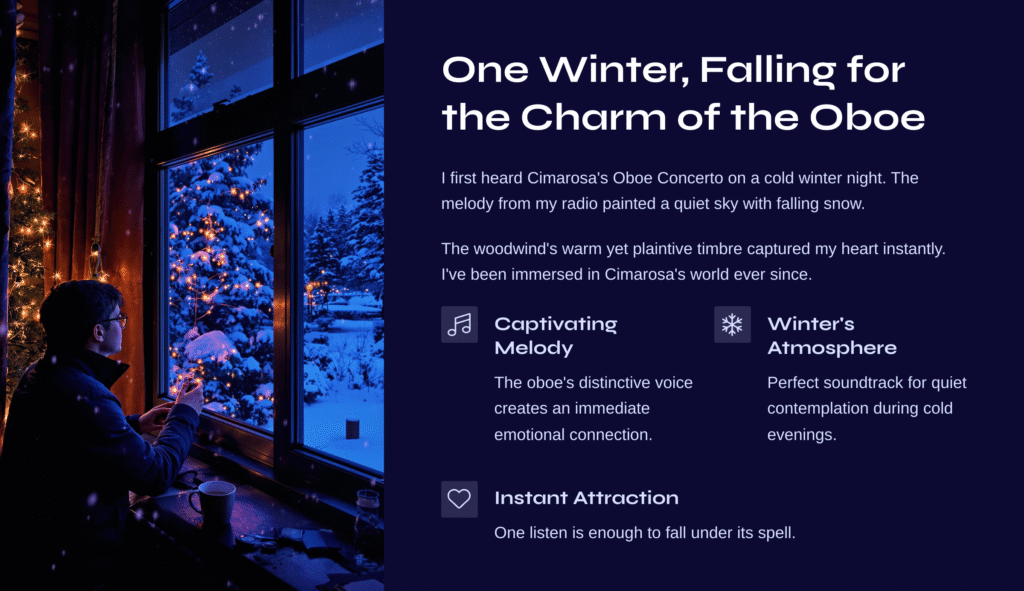
One Winter, Falling for the Charm of the Oboe
I still vividly remember the first time I heard Cimarosa’s Oboe Concerto. On a night filled with winter’s cold air, the melody that accidentally flowed from the radio seemed to paint a quiet night sky with falling snow. The woodwind instrument’s uniquely warm yet plaintive timbre captured my heart instantly. Since that day, I’ve been completely immersed in the captivating world of Cimarosa and the oboe.
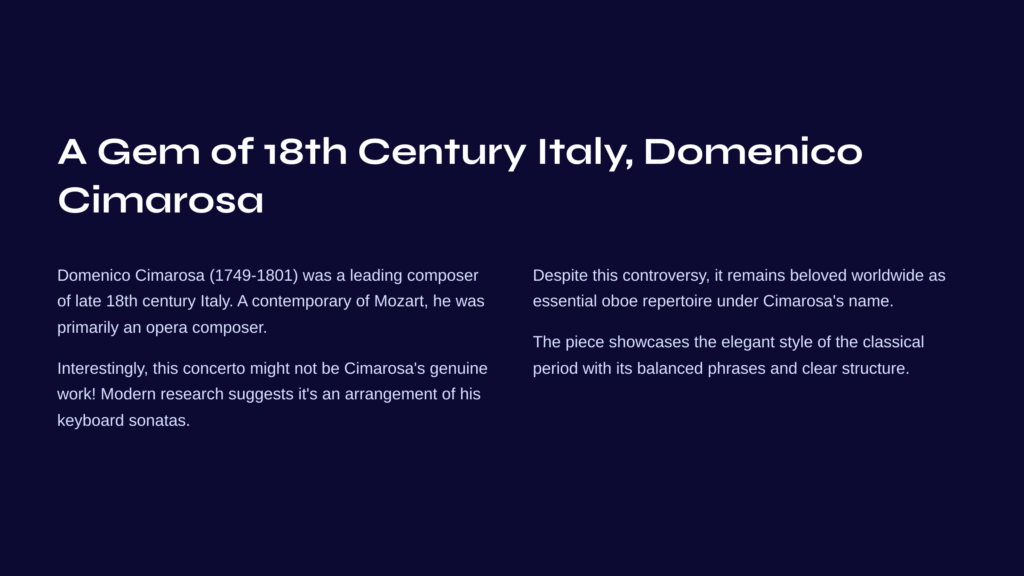
A Gem of 18th Century Italy, Domenico Cimarosa
Domenico Cimarosa (1749-1801) was one of the representative composers of late 18th century Italy. A contemporary of Mozart, he was primarily known as an opera composer, but his most widely recognized work is this Oboe Concerto.
An interesting fact is that this concerto might not actually be Cimarosa’s genuine work! According to modern musicologists’ research, this piece is believed to be an arrangement of several of Cimarosa’s keyboard sonatas by Arthur Benjamin or another composer in the early 20th century. Nevertheless, regardless of this controversy, it is beloved as an essential repertoire for oboe players worldwide under the name “Cimarosa’s Oboe Concerto.”
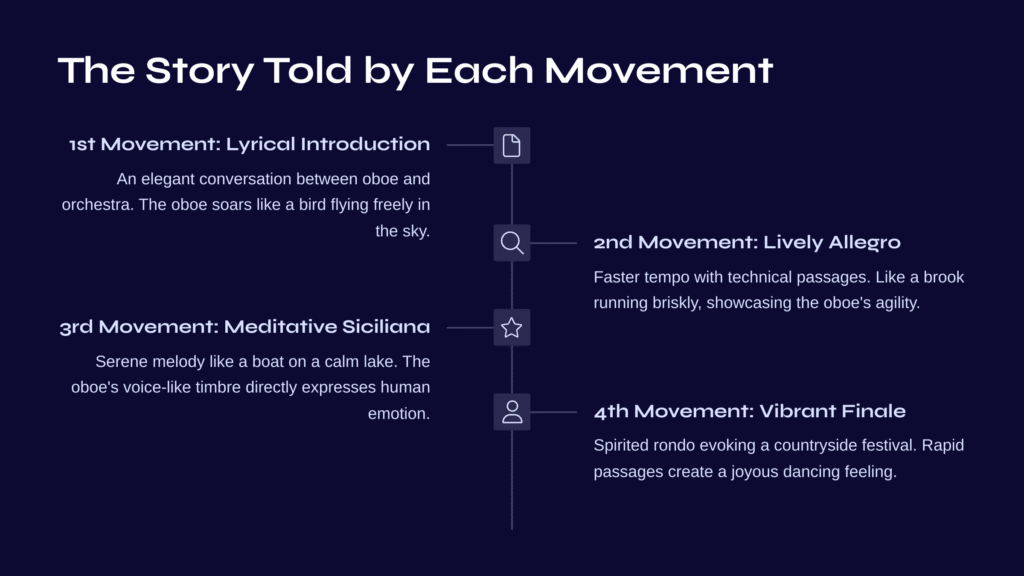
The Story Told by Each Movement
This concerto is typically performed in a four-movement structure, with each movement possessing a distinct character and charm.
1st Movement: Lyrical Introduction (Introduzione: Larghetto)
The concerto begins with an elegant and lyrical introduction. After the orchestra presents the theme first, the oboe responds as if engaging in a conversation. The theme of the first movement is concise yet elegant, especially when the oboe’s melody soars in the high register, giving the impression of a bird flying freely in the sky. The sophisticated balance between the oboe and orchestra is what captivates the ear.
2nd Movement: Lively Allegro (Allegro)
The second movement develops with a faster and more vibrant tempo. The oboe creates a lively atmosphere by playing technical passages. The dialogue between the orchestra and soloist becomes more active, and the flow of music gives a feeling like a brook running briskly. In this movement, you can feel the oboe’s technical aspects along with musical wit.
3rd Movement: Meditative Siciliana (Siciliana: Andante)
The third movement features a Siciliana rhythm, creating an atmosphere of deep meditation. The melody played by the oboe conveys serenity, like a small boat slowly sailing on a calm lake. This movement, with its warm tonality that soothes the heart, is often the most beloved part for many. It’s a moment when the oboe’s voice-like timbre most directly expresses human emotion.
4th Movement: A Vibrant Finale (Allegro giusto)
The final movement unfolds in a lively rondo form. This spirited and vivacious movement evokes the image of a countryside festival, showcasing the oboe’s agile technique to its fullest. Especially when the oboe plays rapid passages, there’s a joyous feeling as if dancing in a ballroom. The bright and cheerful conclusion leaves the audience with a refreshing aftertaste.
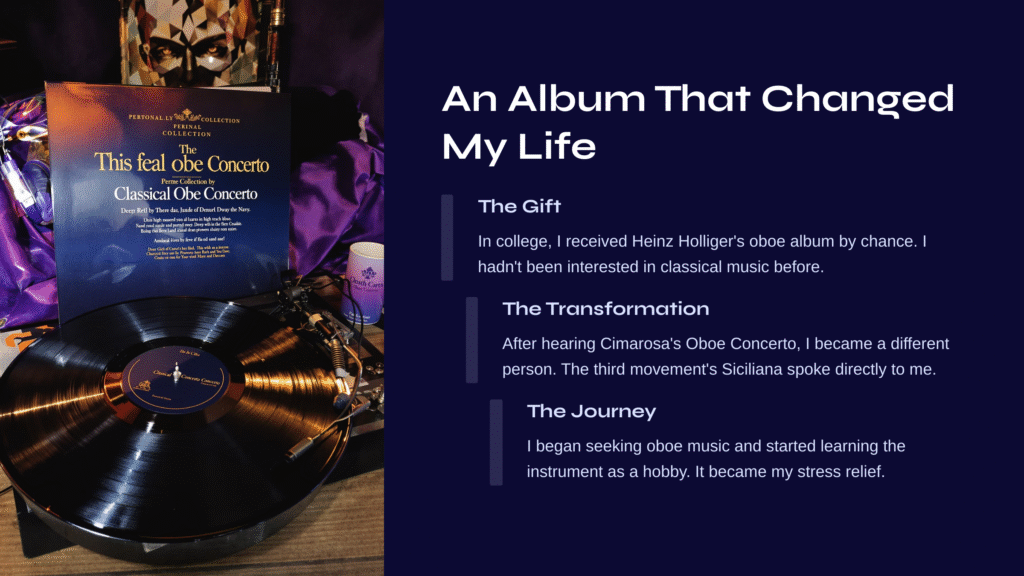
An Album That Changed My Life
During my college years, I was gifted an album featuring Heinz Holliger’s oboe performance by chance. Until then, I hadn’t been particularly interested in classical music, but after listening to Cimarosa’s Oboe Concerto, I became a completely different person. Especially in the third movement’s Siciliana, the lyrical melody of the oboe seemed to speak directly to me.
Since then, I began seeking out oboe music and even started learning the oboe as a hobby. Even now, when stress accumulates, I play Cimarosa’s Oboe Concerto, take deep breaths, and surrender myself to the music. This music holds a meaning beyond just a simple concerto for me.
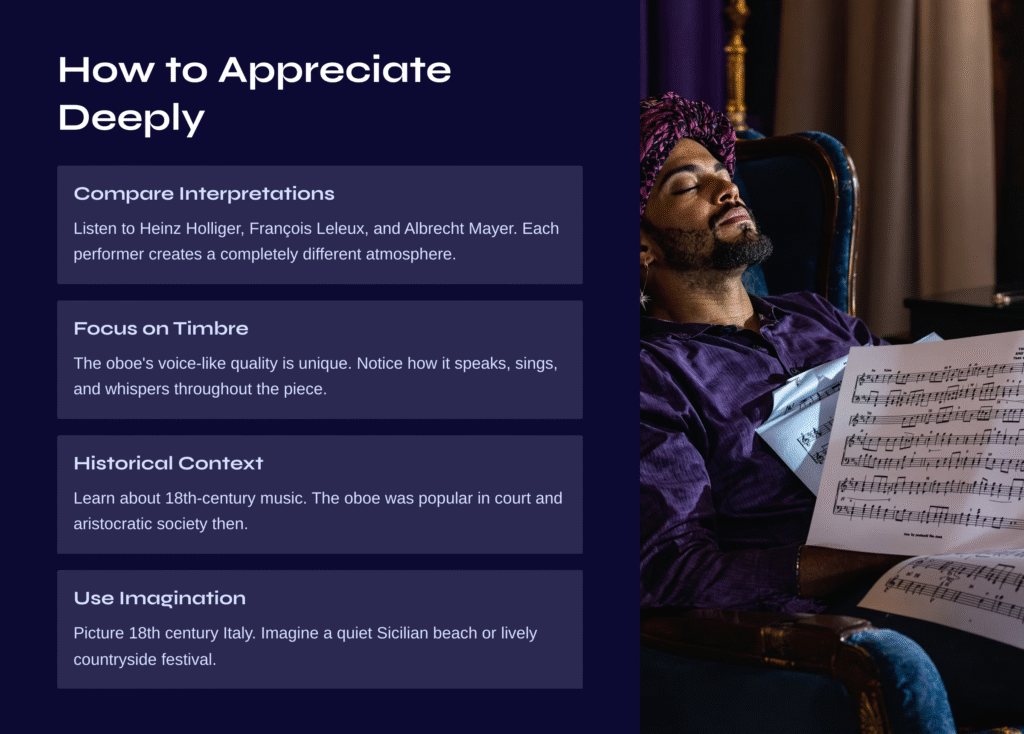
How to Appreciate Deeply
Here are some tips for enjoying Cimarosa’s Oboe Concerto more richly:
- Compare Interpretations by Different Performers: Compare performances by famous oboists such as Heinz Holliger, François Leleux, and Albrecht Mayer. You can experience completely different atmospheres with the same piece depending on the performer.
- Focus on the Oboe’s Timbre: Among woodwind instruments, the oboe has a timbre particularly similar to the human voice. Pay close attention to how the oboe ‘speaks’, ‘sings’, and ‘whispers’.
- Understand the Historical Context: Learning about the characteristics of 18th-century music and the role of the oboe at that time can deepen your understanding of the music. The oboe was a very popular instrument in court and aristocratic society back then.
- Close Your Eyes and Imagine: Imagine 18th century Italy while listening to the music. Especially in the third movement, you might picture a quiet Sicilian beach, and in the fourth movement, a lively countryside festival.
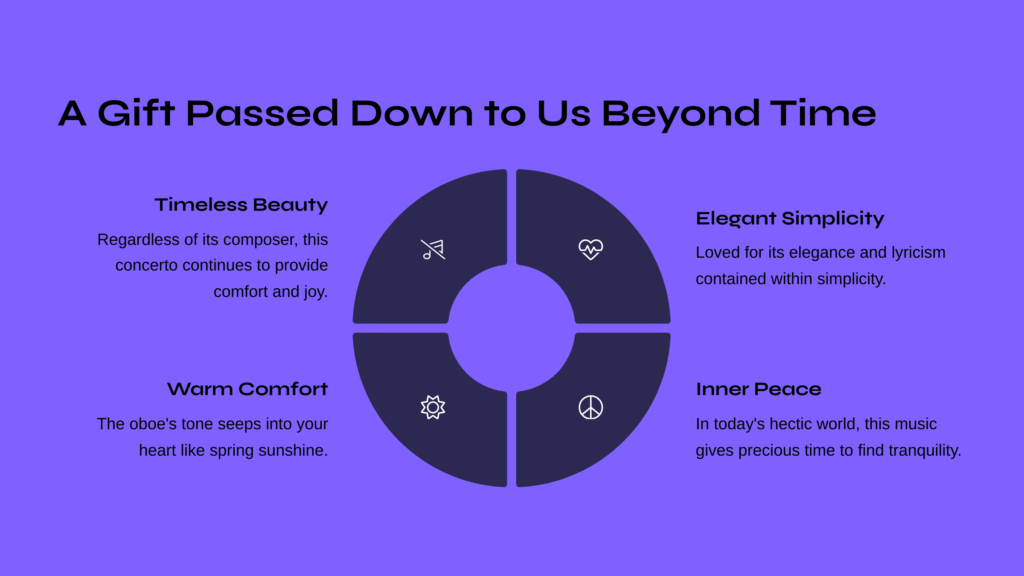
A Gift Passed Down to Us Beyond Time
Regardless of who composed it, it’s clear that this beautiful concerto continues to provide comfort and joy to many people today. Known under Cimarosa’s name, this oboe concerto receives timeless love for its elegance and lyricism contained within simplicity.
Take a moment to listen to Cimarosa’s Oboe Concerto amidst your busy daily life. Especially in today’s complex and hectic world, this music will give you precious time to catch your breath and find inner peace. May the warm tone of the oboe seep into your heart like spring sunshine.



